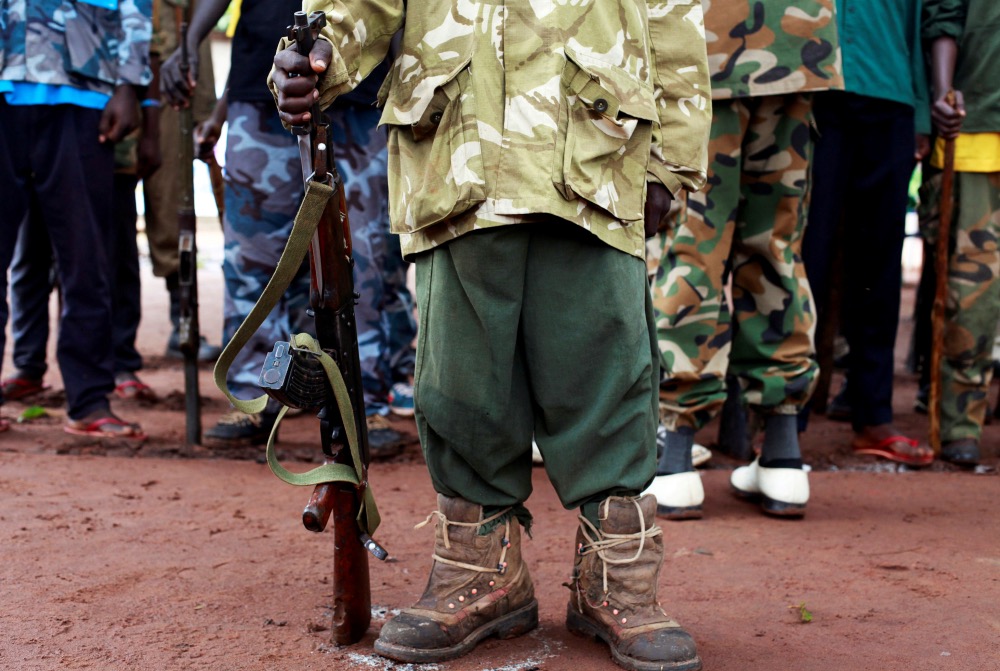Addis Ababa, Ethiopia
Thomson Reuters Foundation
Listening to local communities is key to meeting a global goal of ending the use of children by armed groups by 2025, a top United Nations official and charities said on Thursday.
Former child soldiers often face stigma when they return home and they risk being re-recruited if they cannot find food, security and support among their communities, according to experts on child soldiers.

A former child soldier holds a gun as they participate in a child soldiers’ release ceremony, outside Yambio, South Sudan, on 7th August, 2018. PICTURE: Reuters/Andreea Campeanu/File photo.
“Even when separated from armed forces and groups, children continue to struggle in regaining their place in their families and communities,” the UN Special Representative for Children and Armed Conflict Virginia Gamba told a virtual event.
“Community-led reintegration programming is the most efficient way to ensure rehabilitation and recovery of affected children, to break the cycle of violence and prevent future occurrences of child recruitment,” she added.
Girls and boys are still forced to join armed groups, as fighters or in roles such as cooks or for sexual exploitation, in at least 14 countries including the Democratic Republic of Congo, South Sudan and Somalia, the UN has said.
The exact number of child soldiers is unknown, but in 2019 about 7,700 children – some as young as six – were recruited and used as fighters or in other roles, mostly by armed groups outside the state, such as militias and rebels, UN data shows.
Gamba has warned that more children could be pushed into joining armed groups – regarded as a form of child labour – with increasing poverty due to the COVID-19 pandemic, which has hampered efforts to protect children in conflict zones.
Sandra Olsson of War Child, which co-organised the webinar with anti-slavery group Alliance 8.7, said child rights groups needed to pay more attention to solutions offered by local communities.
From a teacher giving children lessons without being paid to a boy organising football games, local people have a critical role to play in helping children in their community, said Olsson, a reintegration adviser.
“It is not a question of letting them do all the work – these communities have all been affected by conflict in some way and will require support,” Olsson told the Thomson Reuters Foundation.
“But it’s acknowledging their expertise on the matter and helping them support their children.”






